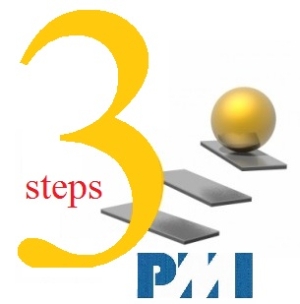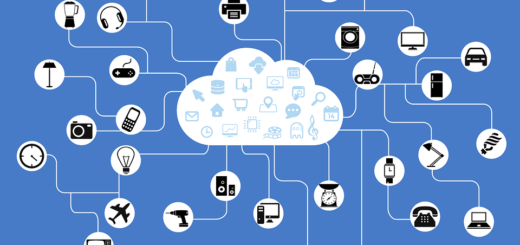Coronavirus and project management: how to make bold decisions in uncertain times

The timeline for project managers to react to the unique and evolving health challenges presented by Coronavirus Disease (COVID-19) has shrunk dramatically. Here are three principles that project management professionals can follow to make bold decisions quickly during a global crisis like the coronavirus pandemic.
If you are a decision maker who deals with people, processes, communication and timelines in a project, you likely know that making good, fast decisions on your project is challenging even under the best of circumstances.
But the trickiest thing is most project-critical decisions are put on hold for a while at the time of an uncertainty such as COVID-19. The pandemic has spread at an overwhelming speed and enormous scale around the globe so that many project-focused organizations are facing paralyzed decision making — when no big-bet decision is made until better times are here to come.
Whatever project, big or small, a typical project manager will likely be acting too slow to keep up in such turbulence. Decisions can only be postponed to wait for more information if it is a usual project environment. But when you have to decide and act under uncertainty — and your decisions are defined by urgency and imperfect information — making late decisions is actually a decision.
Let’s figure out how project managers can make bold decisions quickly in these uncertain times of COVID-19.
1. No panic; take a breath and look around

No panic! It’s the COVID-19 pandemic. Take a breath and look around (image source: unsplash.com)
This means getting relaxed to keep your mind open and creative. For some people, this may sound counterintuitive, but you will likely be counterproductive if you don’t give yourself a moment and look around at things as they are, with no panic and no anxiety. This ability is super essential for project managers now, during the COVID-19 outbreak.
Follow these three simple tips to relax and look around:
- First, tell your project team that you need a moment to think. Nobody should bother you. Turn off “digital distractors” like your mobile phone and laptop. You may need an hour every day to give yourself a moment and try to gain a broader perspective of what’s going on with your project.
- Next, imagine yourself beyond the routine, try to observe your project from above. You want to distance from all the things that make or break your project and do your best to take a broader view.
- Finally, ask yourself these questions: What is most important for my project right now? What might it be missing (expertise, time, budget)? What could we do now that could pay off later?
Your ability to anticipate how things are going to happen — and to begin to act on your project accordingly — can help you avoid mess and hasty decisions that lead to poor project performance or even failure.
In the coronavirus context, if you are a leader of a project team, the first thing you need to address is the physical and financial security of your staff — by implementing a “work from home” (WFH) or “work from anywhere” (WFA) policy and encouraging strict social distancing rules. You must think about remote team performance and how to keep your project staff productive and organized during the quarantine.
In addition, there are the questions of how and when to run remote project meetings, how to handle security issues (VPN, disk encryption, etc.), and more. You must take a breath and prioritize the most pressing questions first. That means having the discipline to ignore distractions.
2. Talk and listen to your team; don’t isolate project decisions

Don’t isolate project decisions (image source: unsplash.com)
At the time of uncertainty presented by the Coronavirus pandemic, some project managers look at limiting authority to those at the top, with few people making crisual project management decisions while huddled behind closed doors. This behaviour rejects the typical hierarchical model in a project that they might be more comfortable with in normal times. But this road may have no way out at one end.
Instead, you should involve more team members and encourage different views and debate in the decision making process. This approach will help make smarter decisions without sacrificing speed.
For large projects with tens and more people involved in project-critical processes (for example, UI/UX design, customer support and sales in a SaaS development project), it is reasonable to experiment with a so-called fishbowl conversation model in which senior stakeholders and decision makers sit around a virtual table to discuss the project state and make decisions on how to move things forward.
At the table there are also multiple experts to rotate between discussions as they have points to share. This kind of a project meeting allows all participants to discuss the project from any angle. It builds understanding among the parties without having to make an extra communication step afterward.
Here are several steps project managers can take to involve more people in project management decision making:
- Clarify the issues to be discussed during the meeting.
- Identify a small number of project decision makers, 2-4 people.
- Identify relevant stakeholders and experts who will take control over implementing project decisions.
- Run one or more virtual meeting sessions for rapid debate and dialogue. Be clear that every participant has a voice but not a vote.
When following these suggestions, you can involve a large number of project stakeholders and team members without sacrificing decision making speed. Especially when the decision you are considering is bold, many points of view help make sure you aren’t missing something.
3. Think and act strategically; set up a decision-making center

In uncertain times, project managers have to make more high-stakes decisions than before and they are also worried about their teams.
When making a big-bet project decision, it’s important to stay focused on things that really matter. That means minimizing time wasters and distractions. If you as a project manager is too frenzied, you are likely to make wrong judgments and miss strategic points.
Setting up a decision-making center can help project managers focus on strategic decisions and their long-term impacts rather than the tactical ones. Let’s figure out what this means.
A decision-making center is one or more cross-functional teams that combine experts and leaders of the same organization, with clear mandates and areas of responsibility. These people concentrate organizational, leadership and communication skills and give project managers the best chance of getting ahead of events with a high degree of uncertainty – rather than reacting to them. Often, they represent HR, sales, marketing, administration, and finance teams in the organization. In stressful times like COVID-19, this “nerve” center keeps everyone coordinated and ensures collaboration and transparency within the project.
With a decision-making, “nerve” center in place, bold project-decisions on the allocation of scarce resources can be made faster and by the right people. For example, it is a strategic decision to adopt a work from home/anywhere policy for all offices and project teams to reduce staffing posture. But making sure that every team member has all necessary equipment at home is a tactical decision for the center.
Remote work policies adopted by thousands of companies around the globe as well as self-isolation and social distancing due to the coronavirus pandemic have proven to be effective decisions that help people remain safe and healthy working from home. Thanks to their decision-making centers, remote project teams continue providing high-quality services and demonstrating high performance during the crisis.













